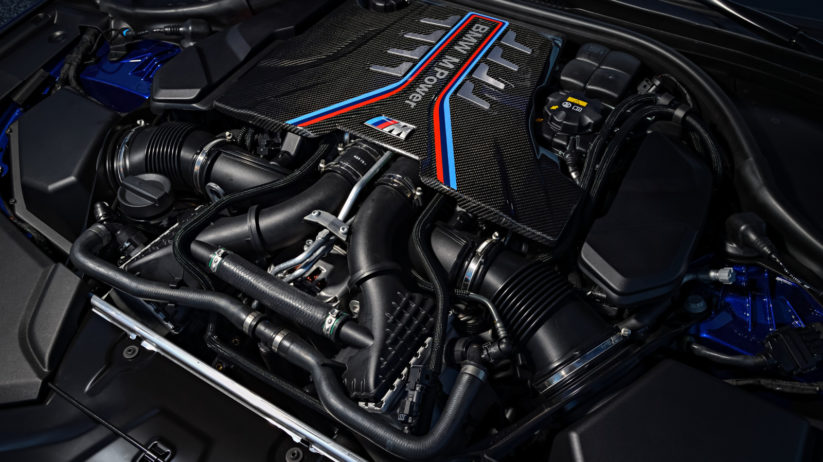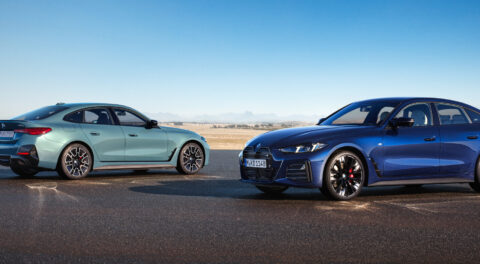These lists are always tough to compose. First off, it takes a while to narrow down anything BMW related into a qualified list because it’s difficult to impose such limitations on any form of desire or admiration, and second, and perhaps even more trying is the actual ranking. While it’s fair to say that anything present within one of these compilations is special and deserving in its own right, we still have to put them in some kind of order, and intertwining histories and vastly different characteristics which make cars, engines and other related peripherals memorable to us over others create quite a bit of complication in the process—in the end, there’s good reason why no one is writing articles about the engine which powered the 2002 Hyundai Sonata.
Additionally, it’s fair to say that the vocal members of our community who gather in the comments always point out something that makes me wish I could go back and include a few important and somehow overlooked omissions. Above all, this should be viewed in a positive light, as we write these articles for our community, and reading the commentary is among the most rewarding parts of this work. Not only, but it’s also a learning experience, one that is always taken in stride so the next piece can be that much better.
Now, onto some engines. As mentioned above, narrowing this list down was difficult and time consuming, and the only real way to cover the necessary history was to once again break things up into a few distinct categories; pre-1990 and post-1990. With everyone still so obsessed with the so-called golden era of BMW engines, which the post-1990 era covers to a certain to degree, this actually seemed like a good place to start, so we can check a few big names off the list before offering what will be a nice history lesson in the pre-1990 article. Without holding things up any further, here are our top modern BMW engine choices—units that few others on the market can touch in terms of their razor sharp nature which makes them worth maintaining today.
5. S62
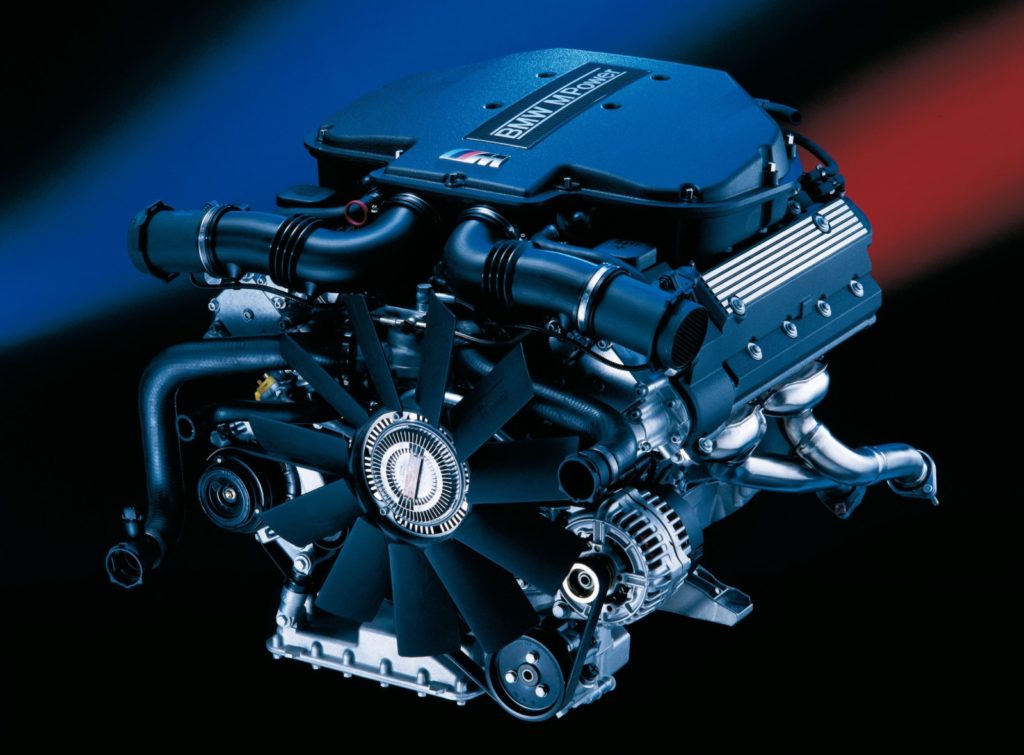
This almost five-liter V8 is a large factor in what makes the E39 M5 such an incredible machine, even a full fifteen years after the last example rolled off the production line. Need further confirmation? A pristine 2002 model year example with fewer than 500 original miles on the odometer sold for $176,000 at auction in August. While the E39 M5 ushered in the modern era of the executive super sedan, the exalted and handmade aluminum-bodied Z8 roadster also uses the engine, albeit with completely different gearing and exhaust, which are able to transform the otherwise fire-breathing engine into a more docile beast than can still unleash the forces of physics when called upon.
Although BMW experienced moderate success with their fascinating all-aluminum pushrod V8 of the 1950’s and 1960’s, it would be nearly 30 years before the marque would once again embark on V8 production, this time in 1992 with the introduction of the DOHC 32-valve M60. These units soon gave way to the M62, which gained VANOS toward the end of the decade. Around this time, and developed from the same underlying concept came the S62B50. Equipped with individual electronically actuated throttle bodies, double-row timing chains, hollow camshafts which are controlled by VANOS on the both the intake and exhaust sides, the S62 was built to perform, and even uses a semi-dry sump lubrication system which employs additional scavenging oil pumps during spirited cornering. Double VANOS was only used on a few specialized M engines like the S50B32 Euro and the world beating McLaren F1’s S70/2 V12 during this period, and to this day the S62 is set apart from others thanks to this technology among others, along with its incredible sound and brute personality, which can be fully unlocked by pressing the sport button in the cockpit. Advertised output was 394 hp at 6,600 rpm with 269 lb. ft. of torque at 3,800, along with a 7,000 rpm redline. Beyond use in production street cars, the S62 also proved to be a robust platform for racing use. Turner Motorsports used the power plant for some of their race cars, and Dinan also built a few for Daytona Grand Am competition. Search your Roundel archive for the October 2007 Issue, and you’ll find the cover story is about one of these engines having found its way into a lucky Z8.
4. S63

Moving forward just over a decade after the release of the S62 came the S63, which was developed from the N63. We’ve already detailed both engines extensively, along with how they’e been evolved and refined over the past decade, but we didn’t get into the specifics of the S63’s personality. The original N63 was among the first to market with a hot-vee configuration, or in other words, having intake air fed from the outside of the cylinder banks, and twin turbochargers mounted on the exhaust manifold in the valley of the block. Although there were initial problems with the N63 and S63 which continued for at least the first few years of production, development has continued unabated, with several new versions of the same underlying design having been released, each posting gains in terms of power, torque and reliability as time has gone on. The S63 M variant was brought to market by way of the first-gen X5 and X6 M back in 2010, and the engine has not ceased to amaze us since.
While the first-generation S63B44O0 engine develops 547 hp at 6,000 rpm with 502 lb. ft. of torque available from 1,500 to 5,650, the most recent S63B44T4 in the F90 M5 Competition offers 617 hp at 6000 revs and 553 lb. ft. of torque from 1,800 to 5,800. Retuning and adjusting of software has of course played a role in the continuously increasing figures, but there have been other significant technical changes as well. Pistons and internals have been getting better which each refresh, while high-pressure direct injection continues to be improved in its delivery and intensity as well. The intake manifold and exhaust designs have also been tuned with increased volumetric efficiency as the goal, and Valvetronic variable valve lift was added long the way too, but while the rest of the engine range has gone modular, the the multifaceted N63 and S63 show are showing no signs of being replaced any time soon. One way to aptly summarizes the feel of driving any S63 or Alpina-modified N63-powered BMW is to mention the unending wall of power and torque behind you. Whether launching the new M5 with its super intelligent xDrive system putting power to all four wheels, or flooring it from 80 in an F01 B7 on the freeway, the incessant surge translating to forward motion will leave you amazed—instant, brutal torque, followed by power that simply continues too build with speed—the S63 is never caught breathless.
3. N55
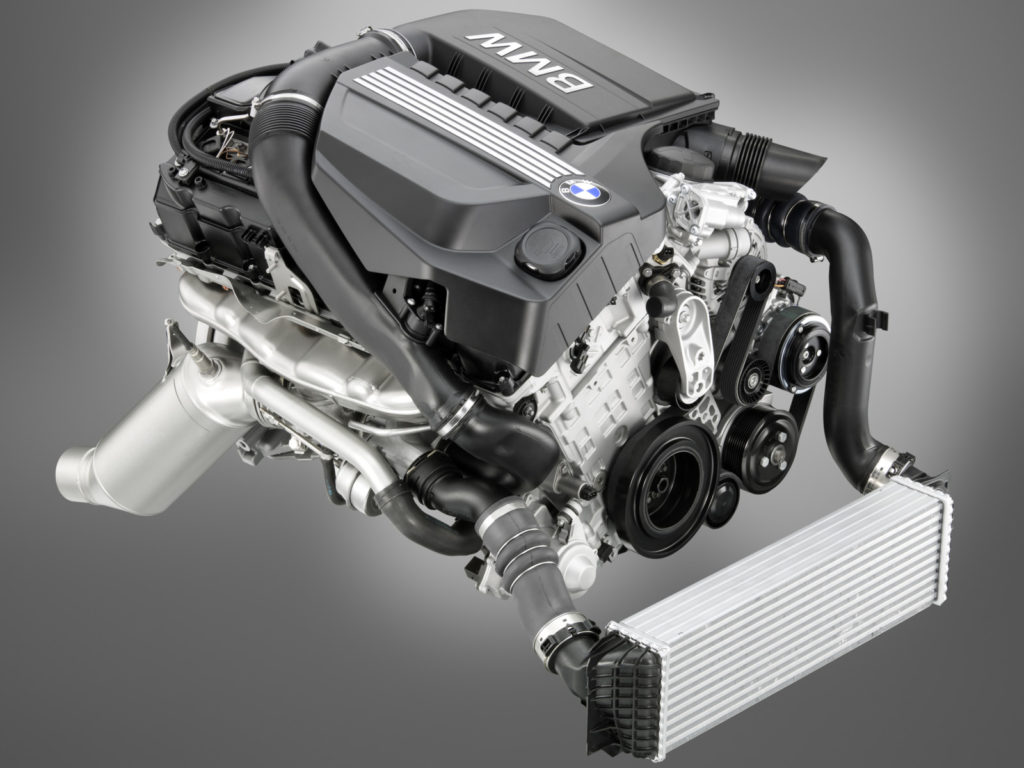
Since replaced by the modular and more powerful B58, the N55 makes this list because it validated the case for a direct-injected and turbocharged BMW straight-six. The N54 was the first BMW engine to market with these technologies, using individual twin turbos and piezo-style injectors, and although it was only used for a few model years before being replaced outside of special cases like the 1 Series M Coupe, 335is and Z4 sDrive 35is, it has since become the choice for individuals intent on a high power build. The initial N54 wasn’t without its own set of issues though, and today the fuel injector revision number is in the double-digits. The N55 came about for the 2009 model year, just two years the N54’s model introduction. Featuring its own, new design as opposed to the N54 which drew heavily upon the previous naturally aspirated M54, the N55 soon become a mainstay of the BMW brand, even more so when the base naturally aspirated N52 gave way to the N20 turbocharged four.
Technology includes the use of more reliable Bosch solenoid fuel injectors and Valvetronic variable valve lift, along with a single twin-scroll turbo as opposed to the small individual conventional units of the N54. Factory output is largely identical between the two in various forms, including special specialized variants for cars like the 1M or M2, but anyone after horsepower figures approaching the four-digit threshold typically opts for the N54, simply because it offers that much more potential—high-test N55 builds are out there as well though, and they’re quite impressive in their own right. Beyond tuning and the unending obsession with power though, the N55 brought with it reliable performance that’s there when you need it without sacrificing efficiency or longevity when you don’t. The N55 has proven to be one of the more reliable modern BMW power plants of the past decade, including those which have been given a slight boost increase via factory BMW Performance or M Performance software. The most common factory version debuted for 2009, and offered 300 hp at 5,800 along with nearly 300 lb. ft. of torque from 1,400 to 5,000 rpm. While they don’t stand out much anymore, the lengthy torque plateau and nearly identical horsepower number meant the engine was incredibly potent for its displacement, and although a bit more high strung thanks to fewer cylinders, the N55 offers a similar wave of unending motivation to the N63 and S63—thanks to the instant and torque. The S55 M version is also something special in its own right, but the character and sound of the N55 have long been a strong point of the non-M engine, elements which were continued in the throaty and even more potent B58.
2. S65
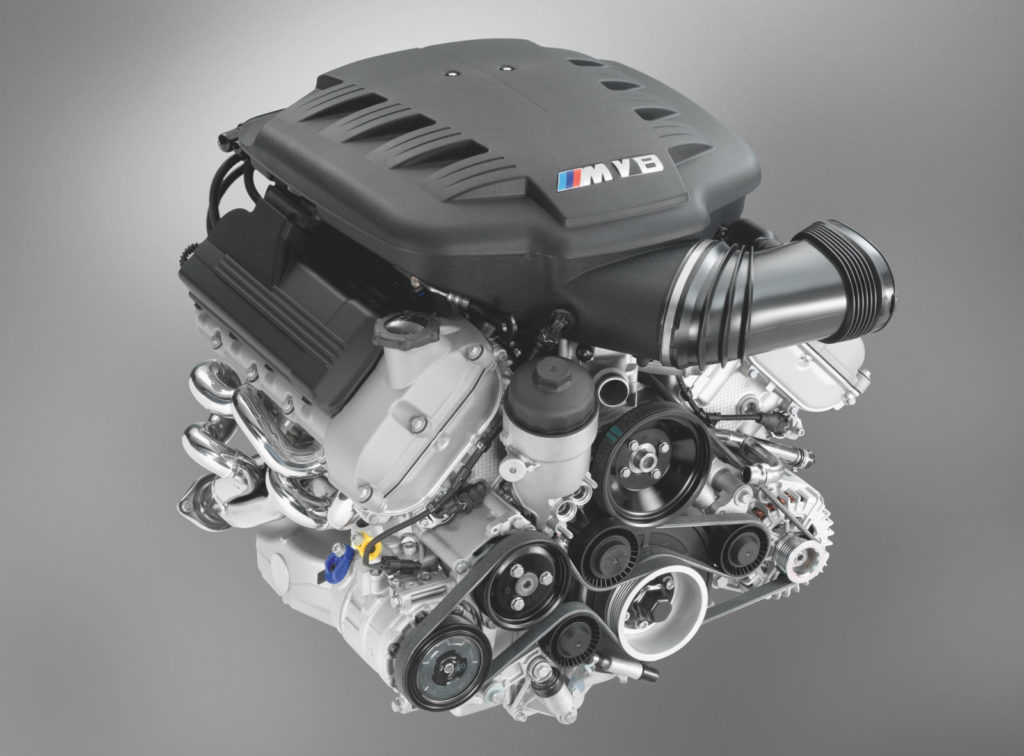
There will always be something special about a naturally aspirated engine though, and that’s why the final top spots on this list are reserved for two of the best ever produced. Derived from the S85 and sans two cylinders, the S65 V8 took the Formula 1 technology of the V10 and improved it. The S65 was also smaller and lighter, making it an ideal fit for the M3 of the era. Not only, but the already astronomically high redline of 8,250 was increased even more, to 8,400. Remembered fondly for it’s exotic personality and ability to make even the most mundane daily commute more interesting through its race-derived characteristics, the S65 set the bar incredibly high for BMW, and in many ways, picked up where the S62 left off with variations developed and used successfully in racing well after series production ended.
The S65 and father S85 are also brimming with technology, and the only way to effectively summarizes these engines is that say that with the way things are going, we’ll likely never see anything like them again when it comes to a production motorcar. In addition to an electronically controlled throttle body for each individual combustion chamber, the V8 also uses double-VANOS, along with a twin-pump wet sump oil system with scavenging capability. Instead of knock sensors, the S65 uses the same ionic current measuring system as the S85 V10, which relies on a low voltage pulse being passed through the spark plugs moments after the main ignition spark, which is then used to get an idea of conditions within the cylinder. The S85 uses an uneven firing order, and the firing order of the S65 is also different than that of most other BMW V8 engines. In standard road-going 4.0-liter form, the S65 develops 414 hp at 8,300 rpm with 300 lb. ft. of torque peaking at 3,900. A few years into production, a 4.4-liter (B44) version was introduced for special cars like the E92 M3 GTS and E90 M3 CRT. This unit makes 444 hp at 8,300 rpm and 320 lb. ft at 3,750. The most potent unit is of course the P65B44, which saw use exclusively in race cars like the Z4 GT3 and M3 GTR.
1. S54
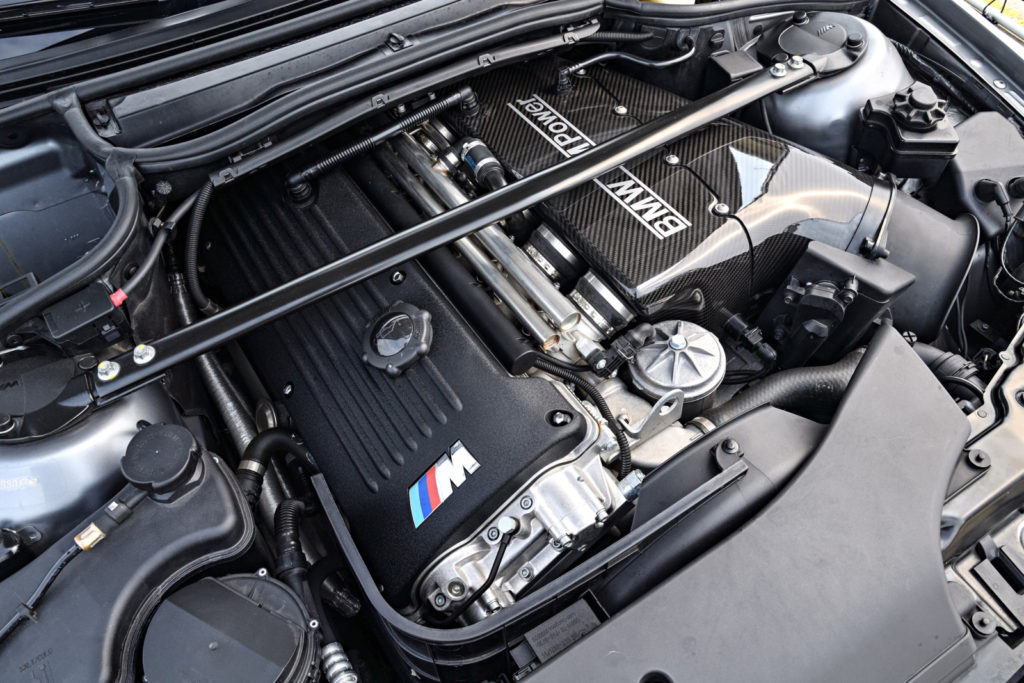
BMW’s core competency has long been the inline six. There have been plenty of game-changing four-cylinder models, but over the past 40 years, much of the story has been about the excellent inline six cylinder engines which made themselves known through excellent torque, respectable longevity, and a distinct high-revving personality, translating to so much more excitement than the competition’s V6. The S54 took the idea of a naturally aspirated BMW six cylinder to its magnum opus, becoming what is undoubtably considered the best of the lineage. Technology was developed and refined over time with the S50B30 and S50B32 Euro-spec M3 engines, before it all came together under the composite wrinkle finish cam cover the S54. BMW engines have always loved to rev, but the S54 pushed this notion to the absolute edge of engineering and production limitations for the era, and owners are all too aware of the recalls that followed. But even with a few Achilles heel issues that deserve to be sorted out preventatively on any example, the S54 has achieved lofted status, even among other greats like the S65 that have come since.
The legacy of the BMW inline six continues today with the B58 which replaced the N55, and before long, the S58 is slated to replace the S55. Turbochargers and direct-injection are excellent, but there’s something undeniably great about the personality of an S54, especially one that’s been opened up by way of a CSL-style airbox, exhaust headers and a carefully crafted muffler like the kind Dinan offered for a short time during the early 2000’s. Technology like double-VANOS variable cam phasing and individual throttle bodies will sound familiar from other M engines on this list, but when it comes to embodying that razor’s edge of performance and sound, there’s nothing quite like the S54 at full tilt. Factory output has since been eclipsed by even the most mundane offerings today, but is still a very respectable 333 hp at 7,900 rpm and 269 lb. ft. of torque at 4,900, which necessitates the use of the lofty 8,000 rpm redline. The S54 was produced in its most potent form for the M3 CSL, and this S54B32HP version makes 355 hp and 273 lb. ft. of torque. This hasn’t stopped the likes of Dinan and others from pushing things even further when such a customer comes along—and who can blame them, when sounds like this are possible?
Honorable Mention: M54
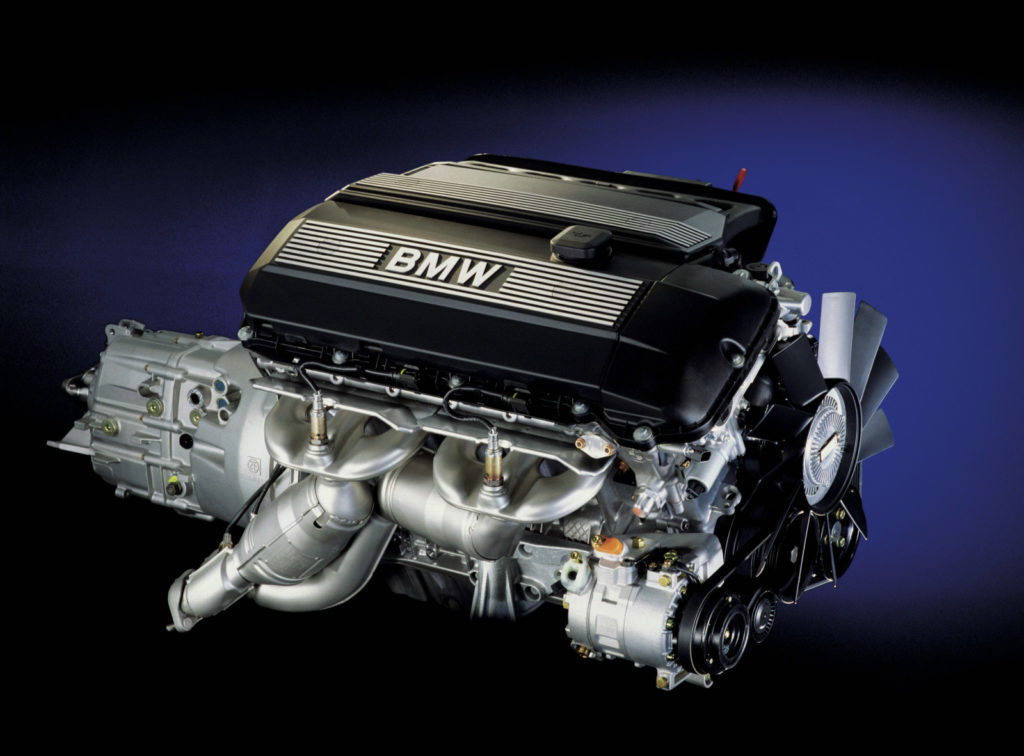
The M54’s occupancy of the naturally aspirated, standard production inline six position has long since been displaced by that of the technologically advanced and more powerful N52, but two of the engines mentioned within the content of this list are actually based on the M54. Both the N54 and the celebrated S54 used underlying design architecture that was initially brought to market on the M54. Not only that, but the M54 proved its worth in three-liter form, under the hood of cars like the lusted-after E46 330i ZHP, utilitarian and reliable E53 X5 3.0, and others like the E39 530i. There’s no shortage of innovative technology either, with items like double VANOS and a variable geometry intake manifold (DISA) both present. Produced most frequently in 230 hp and 220 lb. ft. form, three-liter versions use the crankshaft from the S52B32, and the special type fitted with slightly hotter camshafts that would later be made available through BMW Performance parts was standard equipment under the hood of the ZHP, with output bumped slightly to 235 hp at 5,900 rpm with 222 lb. ft. of torque at 3,500.
As always, we appreciate you checking out this list, and stay tuned for our next edition, where we’ll be given a chance to discuss the history and development path where much of the technology on these engines originated. —Alex Tock
[Photos courtesy BMW AG.]

